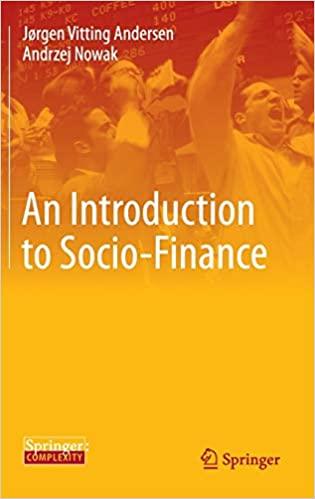Question
Case Study 2 James Watkins, an ambitious 22-year-old, started an entertainment business called Best Club after he graduated from California State University. Best Club initially
Case Study 2 James Watkins, an ambitious 22-year-old, started an entertainment business called Best Club after he graduated from California State University. Best Club initially was a business failure because James ignored day-to-day operations and cost controls. One year later, James was heavily in debt. Despite his debt, James decided to open another location of Best Club. He was confident that Best Club would bring him financial success. However, as his expenses increased, James could not meet his debts. He turned to insurance fraud to save his business. He would stage a break-in at a Best Club location and then claim a loss. In addition, he reported fictitious equipment to secure loans, falsified work order contracts to secure loans, stole money orders for cash, and added zeros to customers bills who paid with credit cards. James was living the good life, with an expensive house and a new sports car. Two years later, James decided to make Best Club a public corporation. He falsified financial statements to greatly improve the reported financial position of Best Club. In order to avoid the SECs scrutiny of his financial statements, he merged Best Club with Red House, an inactive New York computer firm, and acquired Red Houses publicly owned shares in exchange for stock in the newly formed corporation. The firm became known as Red House, and the Best Club name was dropped. James personally received 79 percent of the shares. He was now worth $24 million on paper. James was continually raising money from new investors to pay off debts. A few months later, Red Houses stock was selling for $21 a share, and the companys book value was $310 million. James was worth $190 million on paper. A short time later, he met John Gagne, president of AM Firm, an advertising service. Gagne agreed to raise $100 million, via junk bonds, for Red House to buy out Sun Society, a travel service. Afterward, with television appearances, James became a hot figure and developed a reputation as an entrepreneurial genius. However, this reputation changed after an investigative report was published in a major newspaper. The report chronicled some of his early credit card frauds. Within two weeks, Red Houses stock plummeted from $21 to $5. After an investigation, James was charged with insurance, bank, stock, and mail fraud; money laundering; and tax evasion; and Red Houses shares were selling for just pennies. A company once supposedly worth hundreds of millions of dollars dropped in value to only $48,000. Questions From this case, identify: 1. The pressures, opportunities, and rationalizations that led James to commit his fraud. 2. The signs that could signal a possible fraud. 3. Controls or actions that could have detected Jamess behavior.
Step by Step Solution
There are 3 Steps involved in it
Step: 1

Get Instant Access to Expert-Tailored Solutions
See step-by-step solutions with expert insights and AI powered tools for academic success
Step: 2

Step: 3

Ace Your Homework with AI
Get the answers you need in no time with our AI-driven, step-by-step assistance
Get Started


